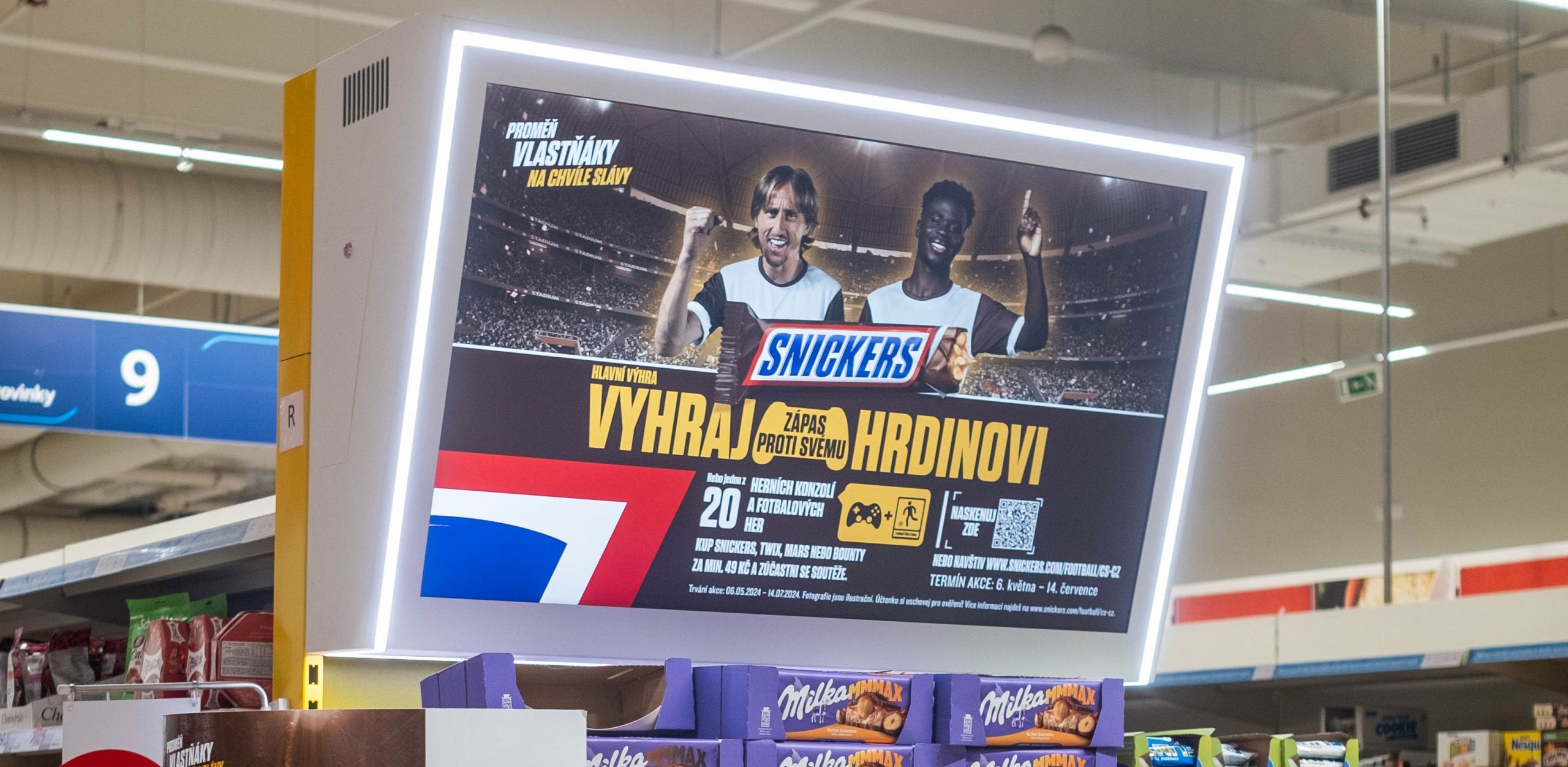- Tesco Resources
- Blog | What shoppers really think about Digital Screens
Blog.
What shoppers really think about Digital Screens
Now live in more than 200 Tesco stores across Czechia, Slovakia, and Hungary, Digital Screens have become a familiar part of the shopping journey for many. In this latest article focusing on the channel, Ronald Brašeň – Head of Sales & Account Management – shares what customers themselves think about the format, and how the campaigns they see influence the way that they shop.
In the first article in this series, I explained why Digital Screens deserve a place in any brand’s media plan. From the reach they offer through to the incredible results they can deliver (particularly when paired with Point of Sale), I noted that Digital Screens should be high on the list for any advertiser looking to run a standout campaign at Tesco.

What about shoppers themselves, though? How do they feel about Digital Screens, and how – if at all – are their behaviours shaped by them? To find out, we surveyed 1,500 customers across Czechia, Slovakia, and Hungary – all of whom had seen Digital Screens within our stores. Here’s what they had to say.
Modern, engaging, and highly visible
Two-thirds of the shoppers we spoke to said that Digital Screens have a positive impact on their in-store experience (68%) – with many describing them as modern (63%), helpful for navigation (50%), and more appealing than print-based materials (48%). Almost half (46%) went on to say that Digital Screens “introduce a brand or product better than any other kind of advertisement”, in fact.
Generally, standing screens at the store entrance were noticed most often and rated as the most “useful” to shoppers, though responses varied between countries. In Slovakia, for instance, customers tended to notice promo-end placements more, while Hungarian shoppers were more likely to recall goalpost-style screens than those in other markets.
Engagement that drives action
Digital Screens are highly effective at capturing shopper attention. 35% noted that they’ve moved closer to a screen to find out more about the product being shown, with a further 5% saying that they’ve found themselves sticking around to watch additional ad content.
Vitally, exposure has a genuine impact on shopper behaviours, too. Amongst engaged shoppers, eight in 10 took at least one action after seeing an ad:
- About half (47%) visited the aisle or department where the featured products were located.
- More than a quarter (26%) searched for additional information about the product online.
- And around a fifth (19%) went on to buy.
47% of shoppers across the three countries also said they came away with a more positive impression of the products shown on screen.
What shoppers want to see
Asked what content they find most helpful on Digital Screens, respondents highlighted three key priorities:
- They’re looking for brands to help them save money, with 67% wanting to learn about special offers and promotions from Digital Screens.
- They want to know about product launches, with 40% hoping to learn about what’s new on the shelves.
- And they’re looking for an easy shopping experience, with 29% finding information that helps them navigate the store to be helpful.
It’s important to be informative, too, say the shoppers on our panel. While 54% stressed that they find the ads on Digital Screens enjoyable, and 53% that they’re inspired to find out more about the items featured, 35% noted that the content they’d seen hadn’t told them enough about the product. Digital Screens aren’t just good for brands trying to capture customer attention, then; they play an actively additive role in the customer shopping experience as well.
In the final post in this series, I’ll be looking at Digital Screens in the context of non-endemic brands – and explaining how businesses that operate outside of the grocery space can still benefit from their magnetic effect.

